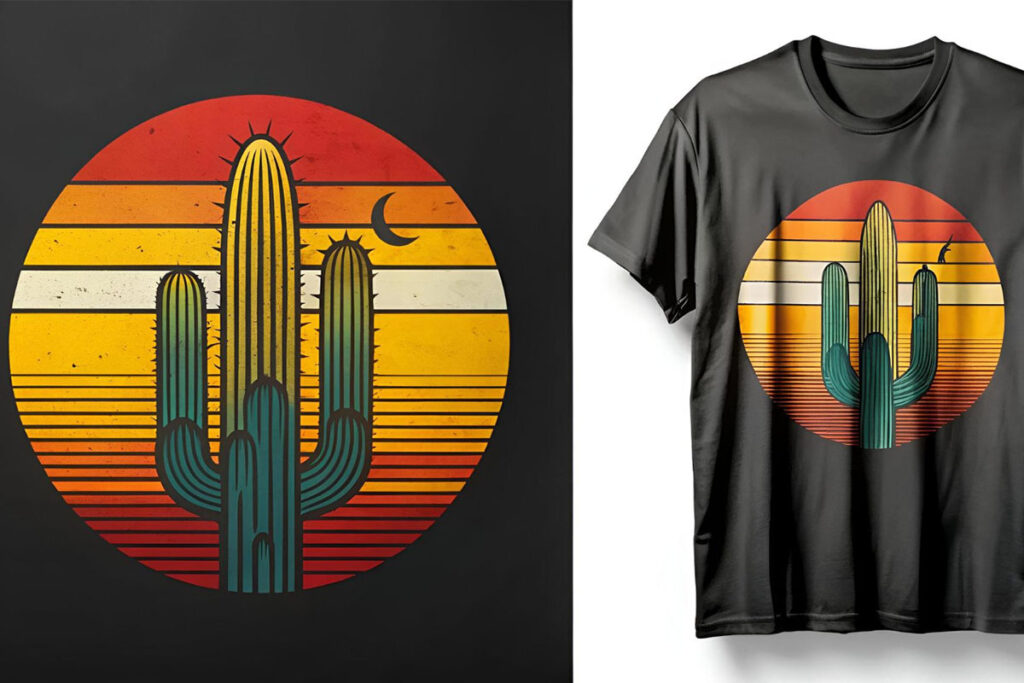In the ever-evolving landscape of digital printing, UV DTF Gangheet stands out as a revolutionary technology that promises stunning quality and durability on a variety of materials. This innovative printing method enables creators to produce vibrant and long-lasting prints by transferring images onto diverse substrates with ease. However, achieving optimal results requires an understanding of essential UV DTF printing tips, including strategies for improving print quality and adhering to DTF printing best practices. Important aspects like pre-treating substrates and calibrating your printer settings play a crucial role in this process. With a few targeted techniques, you can elevate your UV DTF printing experience and create breathtaking visuals that captivate any audience.
UV DTF printing, often referred to as Direct to Film printing, utilizes advanced UV curing techniques to deliver high-quality images on a wide range of materials. This process allows for exceptional flexibility in design and application, making it a favorite among professionals in the printing industry. For those looking to master this technique, understanding DTF printing best practices is key, as they help enhance print quality and ensure smooth operation. Techniques such as effective substrate pre-treatment and proper calibration are essential in achieving consistent results. Embracing these methods not only improves performance but also drives creative possibilities in the world of digital printing.
Maximizing Print Quality with UV DTF Gangheet
When utilizing the UV DTF Gangheet technology, it’s pivotal to focus on the material selection and preparation. Start by engaging with high-quality UV inks that significantly enhance color reproduction and ink adhesion. The inks’ formulation must be compatible with the substrate to ensure durability and resistance to wear. By opting for premium materials, printers can achieve vibrant colors and intricate details that reflect the original digital designs. Furthermore, understanding the specific needs of substrates, such as whether they are porous or non-porous, can influence your choice and result in spectacular prints.
In addition to selecting the right inks, incorporating pre-treatment processes into your workflow is another essential step in maximizing print quality. Implementing appropriate pre-treatments can enhance the ink’s bond with surface materials, thereby drastically improving adhesion and the overall finesse of prints. Testing various pre-treatment methods on different substrates ensures optimal results and prepares surfaces to better accept UV ink, creating prints that are both visually striking and durable. Ultimately, these foundational aspects of selecting quality inks and pre-treating substrates lay the groundwork for high-standard printing results.
Essential Tips for UV DTF Printing
To achieve the finest results from your UV DTF printing experience, it’s crucial to optimize your printer settings. Most UV DTF printers come equipped with adjustable settings that can control resolution, ink saturation, and print speed. Fine-tuning these parameters to the specifics of each print job can vastly improve clarity and detail. For instance, higher resolutions deliver finer details, which is advantageous for intricate designs, while adjusting the print speed can help manage ink distribution across the substrate. Finding this balance is key to optimizing print quality.
Moreover, regular maintenance of your UV DTF printer cannot be overstated. Creating a scheduled routine for printer care helps avoid clogs and ensures that your printer operates smoothly. Regularly cleaning print heads and scanning for ink residue ensures that prints are consistent and free from defects. Additionally, inspecting and maintaining other components of the printer machinery regularly can prevent potential downtimes and extend the lifespan of your equipment. Consistent upkeep is a hallmark of achieving impressive prints time and again.
Pre-Treating Substrates for Optimal Prints
Pre-treating substrates before printing is a crucial step often overlooked by many in the UV DTF printing community. This preparatory action enhances adhesion and helps achieve sharp, vivid images. Depending on the surface material—whether it’s textile, plastic, or metal—pre-treatments may vary. A well-executed pre-treatment can significantly reduce issues related to ink spreading or misalignment during the transfer process, ultimately leading to superior print results.
Additionally, undertaking test prints following the pre-treatment can provide immediate feedback on its effectiveness. Through this testing, printers can quickly identify any necessary adjustments or refinements in their application techniques. This iterative process not only improves adhesion but can also lead to discovering unique effects or finishes based on the specific requirements of the material. Investing time in pre-treatments is vital for anyone serious about maximizing print quality.
Calibrating Colors for Stunning Results
Calibration of ink density and color profiles is indispensable for ensuring that prints accurately reflect the visual design intentions. Before embarking on a new project, it’s advised to calibrate your printer’s colors, which involves adjusting the density settings of each ink to achieve consistent color output. Such calibrations help avoid discrepancies that can arise between digital previews and physical prints, ensuring that results match expectations, particularly in commercial applications.
Implementing a routine calibration schedule not only helps in improving print quality but can also assist in fine-tuning the overall performance of your ink delivery system. Regular checks of ink levels and quality can prevent printing errors and maintain a seamless operation. A properly calibrated printer ensures each project runs smoothly, yielding vibrant colors and accurate designs that truly represent the intended artwork.
Protective Coatings: Enhancing Print Longevity
As a final step in the UV DTF printing process, applying a protective coating can greatly enhance the longevity and visual appeal of printed materials. This process acts as a barrier against environmental factors, such as UV light, moisture, and physical abrasion, which can otherwise degrade print quality over time. By selecting the right type of coating—be it a clear laminate or specific protective finish—printers can safeguard their works against wear while maintaining the vibrancy of colors.
Furthermore, utilizing protective coatings adds an additional layer of professionalism to printed materials, making them more market-ready, especially in competitive industries. The application of coatings should be customized based on the intended use of the prints, whether for indoor displays or outdoor signage. With the right protective measures, the prints produced can withstand time and conditions without compromising quality, ensuring that every project stands the test of time.
Staying Updated on UV DTF Best Practices
The world of UV DTF printing is constantly evolving, with new technologies and techniques emerging frequently. Staying abreast of current best practices involves actively participating in community forums, attending workshops, and continually researching innovations in the field. This dedication to learning can significantly enhance your printing knowledge, allowing you to adopt novel strategies that improve print quality and operational efficiency.
Moreover, engaging with industry experts and peers offers valuable insights that can inspire creative improvements in your printing procedures. Sharing experiences and solutions not only fosters a collaborative environment but also enhances individual competency within the industry. By continually educating yourself on the latest trends and best practices, you position yourself to not only meet the current demands of the market but to lead in your endeavors.
Frequently Asked Questions
What are essential UV DTF printing tips for improving print quality?
To enhance your print quality with UV DTF Gangheet, focus on selecting high-quality inks and substrates, optimizing your printer settings, and conducting regular maintenance. These practices ensure better adhesion, vibrant colors, and consistent output.
How does pre-treating substrates affect UV DTF printing?
Pre-treating substrates is crucial for UV DTF Gangheet as it significantly improves adhesion, especially on non-porous materials. By applying a suitable pre-treatment, you can enhance ink bonding, leading to better quality prints.
What are best practices for calibrating UV DTF printers?
For optimal results with your UV DTF Gangheet, regularly calibrate ink density and color profiles. This process aligns printed colors with their digital representations, ensuring vibrant and accurate outputs.
How can I ensure the durability of prints made with UV DTF Gangheet?
To enhance the durability of your UV DTF prints, apply protective coatings after printing. These coatings prevent scratches and UV damage, ensuring your designs maintain their vibrancy over time.
What are common calibration techniques for improving UV DTF printing results?
Calibration techniques for UV DTF Gangheet involve adjusting ink density, resolving color discrepancies, and fine-tuning printer settings based on test prints to achieve optimal image fidelity.
Why are test prints important in UV DTF Gangheet printing?
Conducting test prints is essential in UV DTF printing as it allows you to evaluate print quality, identify any issues with clarity or colors, and make necessary adjustments before the full production run.
| Key Point | Description |
|---|---|
| Understanding UV DTF Printing | UV DTF printing uses UV-cured inks to transfer high-resolution images onto various substrates, known for its flexibility and quality. |
| Select High-Quality Inks and Substrates | Using high-quality UV inks and suitable substrates improves color vibrancy and print durability. |
| Optimize Printer Settings | Find the right resolution and speed settings to balance detail and ink saturation for optimal prints. |
| Regular Maintenance | Routine cleaning and maintenance of the printer and print heads are vital for consistent performance. |
| Pre-Treating Substrates | Pre-treatment can enhance print adhesion, especially on non-porous surfaces. |
| Calibrate Ink Density and Color Profiles | Regular calibration ensures that printed colors align with digital designs. |
| Test Prints | Conducting test prints helps identify issues before full production. |
| Utilize Protective Coatings | Applying coatings can protect prints from damage and improve durability. |
| Minimize Motion During Transfers | Keep steady during transfers to avoid blurriness and misalignment. |
| Stay Updated on Best Practices | Continually learn about the latest practices and technologies in UV DTF printing. |
Summary
UV DTF Gangheet represents a revolutionary advancement in digital printing technology, enabling artists and businesses alike to achieve remarkable print quality on diverse materials. To harness its full potential, understanding key strategies such as selecting high-quality inks, optimizing printer settings, and maintaining equipment is crucial. With proactive measures like pre-treating substrates and regular calibration, users can enhance color fidelity and adhesion, ultimately leading to stunning, long-lasting prints. By integrating these tips and staying updated on industry best practices, you can elevate your printing results, ensuring your creative projects stand out and endure.



